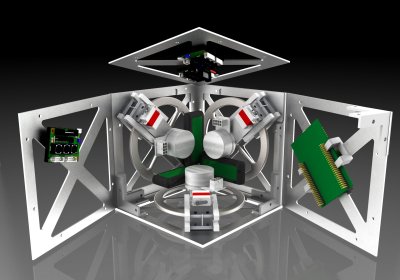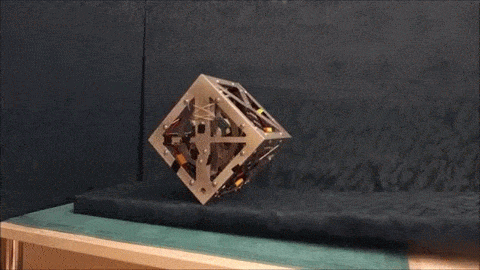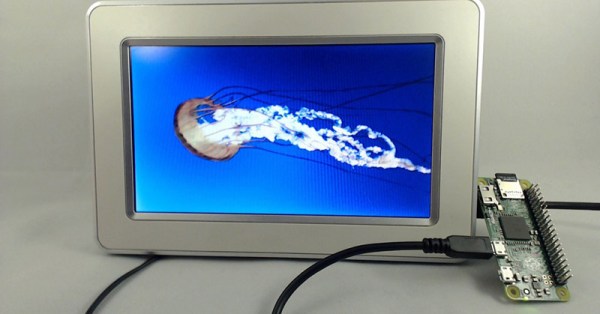It’s been a while since we’ve seen a balancing cube, but as different companies and universities start making them, we’re excited to see how they continue to develop. This one doesn’t really have a catchy name, but its designers [Erik Bjerke] and [Björn Pehrsson] call it a Nonlinear Mechatronic Cube.
Very similar to Cubli — the first self-balancing cube  we remember seeing — this cube can jump up from surfaces, “walk” and balance in any orientation.
we remember seeing — this cube can jump up from surfaces, “walk” and balance in any orientation.
The system features an IMU to determine orientation, three gyros powered by beefy 70W motors, three bicycle brakes powered by servo motors, and a microprocessor to control it all.
The way it balances is quite obvious with the gyros, but the ability to jump comes from the rapid breaking of the “reaction wheels”, allowing for a sudden impulse of force that is powerful enough to reorient the entire cube. The interesting part is how both systems are actually controlled individually with separate control systems.
Continue reading “Resistance Is Futile: Balancing Cubes Are Taking Over!”













